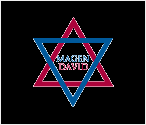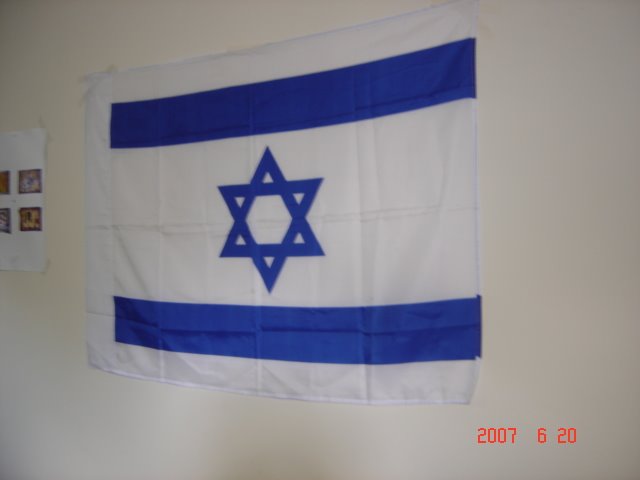Thursday, May 24, 2007
Parashat Naso
Rabino Aron Tendler
Note: The Shabbos Torah Reading is divided into 7 sections. Each section is called an Aliya [literally: Go up] since for each Aliya, one person "goes up" to make a bracha [blessing] on the Torah Reading.
1st Aliya: The family of Gershon is assigned to carry the curtains and tapestries of the Mishkan. The family of Merrari is assigned to carry the beams, poles, and sockets that comprised the walls of the Mishkan.
2nd Aliya: The families of Gershon and Merrari are counted.
3rd Aliya: The laws regarding sending out of the camp: the Mitzora, the Zav (a type of discharge), and anyone who has come in contact with a dead body, are stated. The law of stealing from a convert (making restitution if someone steals from a convert who then dies without any heirs) iscommanded.
4th Aliya: The laws and procedures for the Sotah - the accused adulteress; and the Nazir are explained.
5th & 6th Aliyot: Being that the Leviyim were to be in direct exchange for the first born, Moshe counts all the first born in the rest of the nation. Their total was 22,273. The extra 273 first born are instructed to redeem themselves from Aharon the Kohain for 5 silver shekels.
7th Aliya: The Korbonos offered by the princes of each Shevet at the inauguration of the Mizbeach are listed.
--------------------------------------------------------------------------
Haftorah Naso Shoftim 13:2
Around the year 2790 - 971 b.c.e., the Bnai Yisroel were subject to the rule of the Pilishtim. In the year 2810 - 951, Shimshon became the Judge - Shofet of the nation and served his people as both their greatest Tzadik and greatest warrior. This week's Haftorah tells the story of Manoach and his wife, the parents of Shimshon (Shoftim Cap. 13).Manoach's wife was barren, and in response to her Tefilos, Hashem sent an Angel, disguised as a man, to tell Manoach's wife of her impending pregnancy. The child would have to be a Nazir from the moment of his conception, and he would grow up to save the Jews from their enemies.Manoach requested from Hashem that the "man" appear a second time, and the Angel appeared a second time. The same instructions were repeated to both Manoach and his wife, after which Manoach invited the "man" to join them for a meal. The "man" refused the invitation but suggested to Manoach that he offer a Korban to Hashem. Manoach did so, and as the flame rose to consume the offering, the "man" entered the flames and disappeared. Manoach and his wife then realized that the "man" was really an Angel, and understood the divine significance of their, yet to be born, child.The connection to our Parsha is the fact that Shimshon was to be a Nazir. The commentaries explain that in contrast to the laws of the Sotah – the accused adulteress, it was the merit of Manoach's wife which brought about the birth of Shimshon.Shimshon is among the most difficult figures in Jewish history to understand. For a comprehensive presentation and explanation see, "Samson's Struggle", by Rabbi Gershon Weiss.
Note: The Shabbos Torah Reading is divided into 7 sections. Each section is called an Aliya [literally: Go up] since for each Aliya, one person "goes up" to make a bracha [blessing] on the Torah Reading.
1st Aliya: The family of Gershon is assigned to carry the curtains and tapestries of the Mishkan. The family of Merrari is assigned to carry the beams, poles, and sockets that comprised the walls of the Mishkan.
2nd Aliya: The families of Gershon and Merrari are counted.
3rd Aliya: The laws regarding sending out of the camp: the Mitzora, the Zav (a type of discharge), and anyone who has come in contact with a dead body, are stated. The law of stealing from a convert (making restitution if someone steals from a convert who then dies without any heirs) iscommanded.
4th Aliya: The laws and procedures for the Sotah - the accused adulteress; and the Nazir are explained.
5th & 6th Aliyot: Being that the Leviyim were to be in direct exchange for the first born, Moshe counts all the first born in the rest of the nation. Their total was 22,273. The extra 273 first born are instructed to redeem themselves from Aharon the Kohain for 5 silver shekels.
7th Aliya: The Korbonos offered by the princes of each Shevet at the inauguration of the Mizbeach are listed.
--------------------------------------------------------------------------
Haftorah Naso Shoftim 13:2
Around the year 2790 - 971 b.c.e., the Bnai Yisroel were subject to the rule of the Pilishtim. In the year 2810 - 951, Shimshon became the Judge - Shofet of the nation and served his people as both their greatest Tzadik and greatest warrior. This week's Haftorah tells the story of Manoach and his wife, the parents of Shimshon (Shoftim Cap. 13).Manoach's wife was barren, and in response to her Tefilos, Hashem sent an Angel, disguised as a man, to tell Manoach's wife of her impending pregnancy. The child would have to be a Nazir from the moment of his conception, and he would grow up to save the Jews from their enemies.Manoach requested from Hashem that the "man" appear a second time, and the Angel appeared a second time. The same instructions were repeated to both Manoach and his wife, after which Manoach invited the "man" to join them for a meal. The "man" refused the invitation but suggested to Manoach that he offer a Korban to Hashem. Manoach did so, and as the flame rose to consume the offering, the "man" entered the flames and disappeared. Manoach and his wife then realized that the "man" was really an Angel, and understood the divine significance of their, yet to be born, child.The connection to our Parsha is the fact that Shimshon was to be a Nazir. The commentaries explain that in contrast to the laws of the Sotah – the accused adulteress, it was the merit of Manoach's wife which brought about the birth of Shimshon.Shimshon is among the most difficult figures in Jewish history to understand. For a comprehensive presentation and explanation see, "Samson's Struggle", by Rabbi Gershon Weiss.




